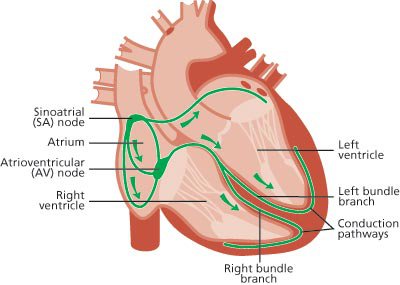
Perioperative tachycardia, a common occurrence in surgical procedures and the immediate postoperative period, presents a concern for healthcare professionals. It refers to a rapid heart rate exceeding a predetermined threshold, typically defined as 100 beats per minute or more. This condition can arise due to a variety of factors, such as physiological stress, anxiety, pain, and underlying medical conditions. Understanding the causes and potential implications of perioperative tachycardia is crucial for providing optimal patient care.
Immediate identification and management are essential to minimize potential adverse events. Healthcare providers should frequently assess patients' heart rates during the perioperative period and implement appropriate interventions, such as medication administration, to restore hemodynamic stability.
Treating Postoperative Tachycardia: A Clinical Guide
Postoperative tachycardia, a common complication following surgery, can pose significant challenges for clinicians. This phenomenon is characterized by an elevated heart rate which typically persists a prolonged period post-procedure.
Understanding the underlying etiologies of postoperative tachycardia is crucial for establishing effective management strategies. Various factors can contribute to this situation, including pain, anxiety, fluid shifts, and autonomic nervous system instability.
Effective treatment of postoperative tachycardia requires a multimodal approach. Drug interventions often play a key role, with options such as beta-blockers and calcium channel blockers utilized to regulate heart rate. Alongside medication therapy, alternative can be beneficial. These may include stress reduction techniques, optimization of pain management, and appropriate fluid resuscitation.
An comprehensive assessment of the patient's clinical status, with consideration to their medical history, current medications, and postoperative course, is essential for adjusting the management plan. Regular monitoring of vital signs, including heart rate, blood pressure, and oxygen saturation, is crucial to ensure patient safety and effectively manage postoperative tachycardia.
Perioperative Heart Rate Elevation: Causes and Considerations
Elevated heart frequencies during the perioperative period can present as a common physiological response to various stimuli. A myriad of causes can give rise to this phenomenon, ranging from anesthetic agents and surgical stress to underlying preexisting heart conditions.
It's essential for clinicians to accurately determine the root cause of perioperative heart rate elevation, as it can influence patient outcomes and direct management strategies. A comprehensive evaluation should include a detailed review of the patient's surgical history, preoperative vital signs, and current medications.
Furthermore, neurological examination findings can provide valuable information regarding potential underlying issues.
Can Tachycardia After Surgery Normal? Exploring Common Causes
Following a surgical procedure, a person's heart rate may often increase. This accelerated heartbeat, known as tachycardia, can be an expected occurrence in the postoperative period. That said, understanding the possible causes of tachycardia after surgery is essential for accurate diagnosis and treatment. Some typical culprits include pain, anxiety, dehydration, medications, and anemia. Often cases, tachycardia resolves on its own as the body recovers.
However, if you are feeling persistent or alarming tachycardia after surgery, it's vital to consult with your healthcare provider immediately.
The Incidence and Impact of Perioperative Tachycardia
Perioperative tachycardia presents in a significant proportion of patients undergoing surgical procedures. This condition, characterized by an elevated heart rate prior to surgery, can have a detrimental impact on patient outcomes. The exact incidence of perioperative tachycardia varies depending on factors such as the type of surgery, anesthetic techniques employed, and the patient's underlying health conditions.
High heart rates can contribute to hemodynamic instability, leading to complications such as get more info hypotension, arrhythmias, and myocardial ischemia. Furthermore, perioperative tachycardia has been associated with an increased risk of postoperative complications.
Recognizing the potential consequences, clinicians should actively monitor heart rate during the perioperative period and implement strategies to control tachycardia when required.
Tachycardia in the Operating Room: Assessment and Management
Tachycardia within the operating room can indicate a significant hemodynamic disturbance. A rapid heart rate requires prompt assessment and suitable management to ensure patient safety.
The initial step involves a thorough clinical examination, including monitoring vital signs such heart rhythm, blood force, and respiratory function.
A detailed account of the patient's recent medical situation should also be obtained to determine potential underlying factors.
Heart monitoring is essential to establish the type of tachycardia and recognize any abnormalities.
Blood tests may be useful in assessing electrolyte imbalance, thyroid function, and other elements that could be influencing to the tachycardia.
Based on the diagnosis, management strategies should be adjusted to the primary cause and the patient's clinical condition.
Therapy options may include fluid infusion, electrolyte correction, medication use to control heart rate and rhythm, and in some cases, invasive procedures such as synchronized electrical stimulation.
Continuous surveillance of the patient's vital signs and adaptation to treatment is indispensable throughout the perioperative period.
Factors Influencing Perioperative Heart Rate Dynamics
Perioperative heart rate variations are significantly influenced by a complex interplay of physiological factors. Preoperative patient characteristics such as age, preexisting medical conditions, and anxiety levels can contribute to baseline heart rate. Intraoperatively, anesthetic agents, surgical stimulation, and hemodynamic adjustments can modulate heart rate. Postoperatively, pain, inflammation, and healing phases also play a role in heart rate variability. Careful monitoring and intervention of these factors are crucial to ensure optimal cardiovascular outcomes during the perioperative period.
Post-Surgery Heart Rate Elevation
Post-operative tachycardia, characterized by an accelerated heart rate following surgery, can significantly/noticeably/potentially impact patient recovery. This condition can manifest as a result of various factors, including anesthesia, pain, and inflammation. While often temporary, persistent tachycardia may indicate/suggest/point to underlying complications, necessitating prompt/timely/immediate medical attention. Monitoring heart rate closely after surgery is crucial/essential/vital to ensure optimal healing and minimize potential risks associated with this common/frequent/usual postoperative phenomenon.
Perioperative Arrhythmias: Recognizing and Addressing Tachycardia
During the perioperative period, patients are at risk to developing arrhythmias. One of the frequently encountered types is tachycardia, characterized by a heart rate exceeding normal limits. Prompt recognition and management of tachycardia are crucial to patient safety. Clinical signs can manifest as palpitations, shortness of breath, chest pain, dizziness, or fainting. Electrocardiography (ECG) is the most important tool for identifying tachycardia. Treatment methods depend on the underlying cause and severity of the arrhythmia. Pharmacological options include beta-blockers, calcium channel blockers, and antiarrhythmic agents.
In some cases, procedural procedures such as cardioversion or catheter ablation may be necessary.
Strategies for Minimizing Perioperative Tachycardia
Minimizing perioperative tachycardia involves a multifaceted approach that encompasses various pre-, intra-, and postoperative interventions.
A comprehensive assessment of the patient's medical history, including underlying conditions and medications, is crucial for identifying potential risk factors contributing to tachycardia.
Preoperative optimization strategies including judicious fluid management, electrolyte balance correction, and anxiolysis can help mitigate autonomic response.
During surgery, attenuating the hemodynamic stress response through careful anesthetic techniques, adequate analgesia, and temperature control is essential. Maintaining a calm and supportive environment for the patient can also contribute to lowering tachycardia.
Postoperatively, vigilant monitoring, early ambulation, and pain management are essential in facilitating regeneration and preventing post-operative complications.
Monitoring Heart Rate Variability in the Operating Room: A Window into Surgical Stress
During surgical procedures, patients often experience physiological stress. This can lead to alterations in various bodily functions, including heart rate variability (HRV). HRV, a measure of the difference in time between consecutive heartbeats, provides valuable insights into the autonomic nervous system's response. Reduced HRV during surgery has been linked with increased probability of adverse events.
Physicians and researchers utilize HRV monitoring as a potential tool to assess cardiac response during surgery. By analyzing the patterns of HRV, clinicians can gain a better knowledge of the patient's cardiovascular state. This information can be essential in adjusting surgical strategies and ensuring optimal patient care.
- Additionally, HRV monitoring may serve as an early indicator of impending cardiac problems during surgery, allowing for timely treatment to mitigate potential risks.
- Despite this, the relationship between HRV and surgical stress is intertwined, requiring further investigation to fully elucidate its implications in clinical practice.
Perioperative Tachycardia Control: The Role of Anesthesia
Perioperative tachycardia presents a common challenge for medical professionals. Prompt and effective intervention is crucial to minimize adverse outcomes and ensure patient safety. Anesthesiologists utilize a variety of techniques, including pharmacologic agents like beta-blockers, to regulate heart rate during both the induction and maintenance phases of anesthesia. Furthermore, optimizing anesthetic depth and monitoring hemodynamics closely are essential components of tachycardia suppression. By implementing these strategies, anesthesiologists can effectively manage perioperative tachycardia and contribute to a successful surgical outcome.
Preoperative Risk Factors for Postoperative Tachycardia
Identifying individuals at risk for postoperative tachycardia is crucial for optimizing perioperative care. Several preoperative characteristics can contribute to this complication. Increased age is a significant predictor, as the cardiovascular system may present greater stress during and after surgery. Pre-existing conditions such as hypertension, diabetes mellitus, and coronary artery disease can also elevate the probability of postoperative tachycardia. Additionally, certain anesthetic agents and surgical procedures intrinsically carry a risk for tachycardia.
- Preoperative medication use, particularly beta-blockers or anticholinergics, can also influence the risk of postoperative tachycardia. Subjects who are smokers may be more susceptible to this complication due to nicotine's effects on heart rate and rhythm.
Prompt Identification and Management of Intraoperative Tachycardia
Perioperative tachycardia, a common cardiovascular complication in surgical procedures, can have adverse consequences for patient outcomes. Immediate detection and intervention are crucial to minimize the risk of complications like myocardial ischemia, arrhythmias, and hemodynamic instability. Healthcare providers should employ a multi-pronged approach that includes continuous cardiac monitoring, meticulous intraoperative management, and appropriate pharmacological interventions. Additionally, patient education regarding preoperative risk factors and strategies to improve cardiovascular health can contribute to a less risky surgical experience.
Optimizing Fluid Management to Prevent Tachycardia After Surgery
Maintaining hemodynamic stability after surgery is crucial for patient recovery. One key aspect of this management involves optimizing fluid administration to prevent tachycardia. significant fluid shifts can trigger an elevation in heart rate, potentially leading to complications. Therefore, meticulous monitoring of fluid input and output is essential. A balanced approach, considering factors such as patient age, pre-operative status, and surgical procedure, will help clinicians maintain appropriate hydration levels. Close collaboration between the anesthesia team and the surgical team is essential to execute a tailored fluid management strategy that minimizes the risk of postoperative tachycardia.
Perioperative Tachycardia: Effect on Surgical Outcomes
Perioperative tachycardia, a common physiological response during surgical procedures, has been shown to potential negative outcomes. While some degree of tachycardia is normal in the perioperative period, prolonged elevations in heart rate can worsen various surgical complications. Studies have revealed a correlation between perioperative tachycardia and increased probability of postoperative complications such as wound infection, myocardial infarction, and prolonged hospital stay.
The underlying mechanisms contributing to perioperative tachycardia are multifactorial and can include anesthetic agents, pain, stress, hypoxia, and autonomic nervous system dysregulation. Identifying patients at high risk for perioperative tachycardia is crucial for implementing appropriate interventions to mitigate its potential unfavorable implications. Early identification and management of tachycardia can improve surgical outcomes, reduce postoperative morbidity, and enhance patient safety.
Patient-Specific Factors Influencing Postoperative Heart Rate
A multitude of patient-specific factors can significantly influence postoperative heart rate. These factors encompass years of life, preexisting medical conditions, and medications the patient is receiving. Additionally, psychological factors such as apprehension can impact an elevated heart rate following surgery. Patients who are greater active may exhibit a quicker recovery and consequently a quicker return to baseline heart rate. Conversely, patients who have issues during or after surgery may experience a prolonged increase in heart rate. Understanding these patient-specific variables is crucial for clinicians to evaluate postoperative heart rate and implement appropriate interventions to ensure optimal patient care.
Tachycardia Following Anesthesia
Tachycardia is/can be/presents as a common complication/occurrence/issue in the post anesthesia care unit recovery room. It refers to/describes/indicates a heart rate above/exceeding/greater than 100/120/140 beats per minute bpm. Several factors/A variety of etiologies/Multiple contributors can contribute/lead to/cause tachycardia in the PACU, including/such as/among which are residual anesthetic effects, pain, anxiety, dehydration, hypovolemia, and electrolyte imbalances/disruptions/disturbances. Early identification/Prompt recognition/Detecting tachycardia is crucial/essential/important to ensure/guarantee/facilitate patient safety. Clinicians should/must/are required to monitor heart rate closely and implement/utilize/apply appropriate interventions such as/including/in cases of fluid resuscitation, medications, and addressing underlying causes/factors/origins.
Autonomic Nervous System in Perioperative Tachycardia
Perioperative tachycardia, a common occurrence during surgical procedures, results from the interplay between the sympathetic and parasympathetic divisions of the nervous control system. These branches dynamically regulate physiological processes to maintain homeostasis. During surgery, various factors such as anesthesia administration, surgical stimuli, and emotional stress can precipitate sympathetic activation, leading to an elevation in heart rate. Conversely, parasympathetic activity may diminish, contributing to the overall tachycardia. Understanding this complex interplay is crucial for effective perioperative management and minimizing adverse outcomes.
Perioperative Monitoring Strategies for Detecting Tachycardia
Effective management of tachycardia during the perioperative period involves meticulous monitoring strategies. Clinicians implement a variety of techniques to identify accelerated heart rates, which can signify underlying pathologies.
Continuous electrocardiogram (ECG) recording provides real-time visualization of cardiac rhythm and rate. Heart rate monitoring can also detect tachycardia by measuring pulse rate alongside oxygen saturation levels. Invasive hemodynamic variables, such as arterial blood pressure and central venous pressure, can provide additional insights about the cardiovascular status.
Early detection of tachycardia allows for timely treatments to correct heart rate and prevent potentially life-threatening complications.
 Ralph Macchio Then & Now!
Ralph Macchio Then & Now! Judge Reinhold Then & Now!
Judge Reinhold Then & Now! Matilda Ledger Then & Now!
Matilda Ledger Then & Now! Susan Dey Then & Now!
Susan Dey Then & Now! Naomi Grossman Then & Now!
Naomi Grossman Then & Now!